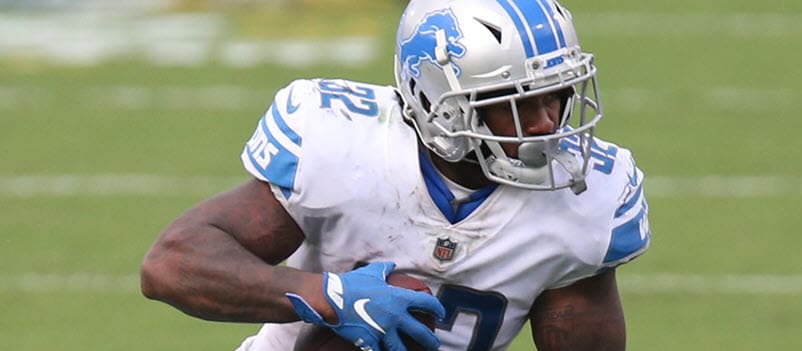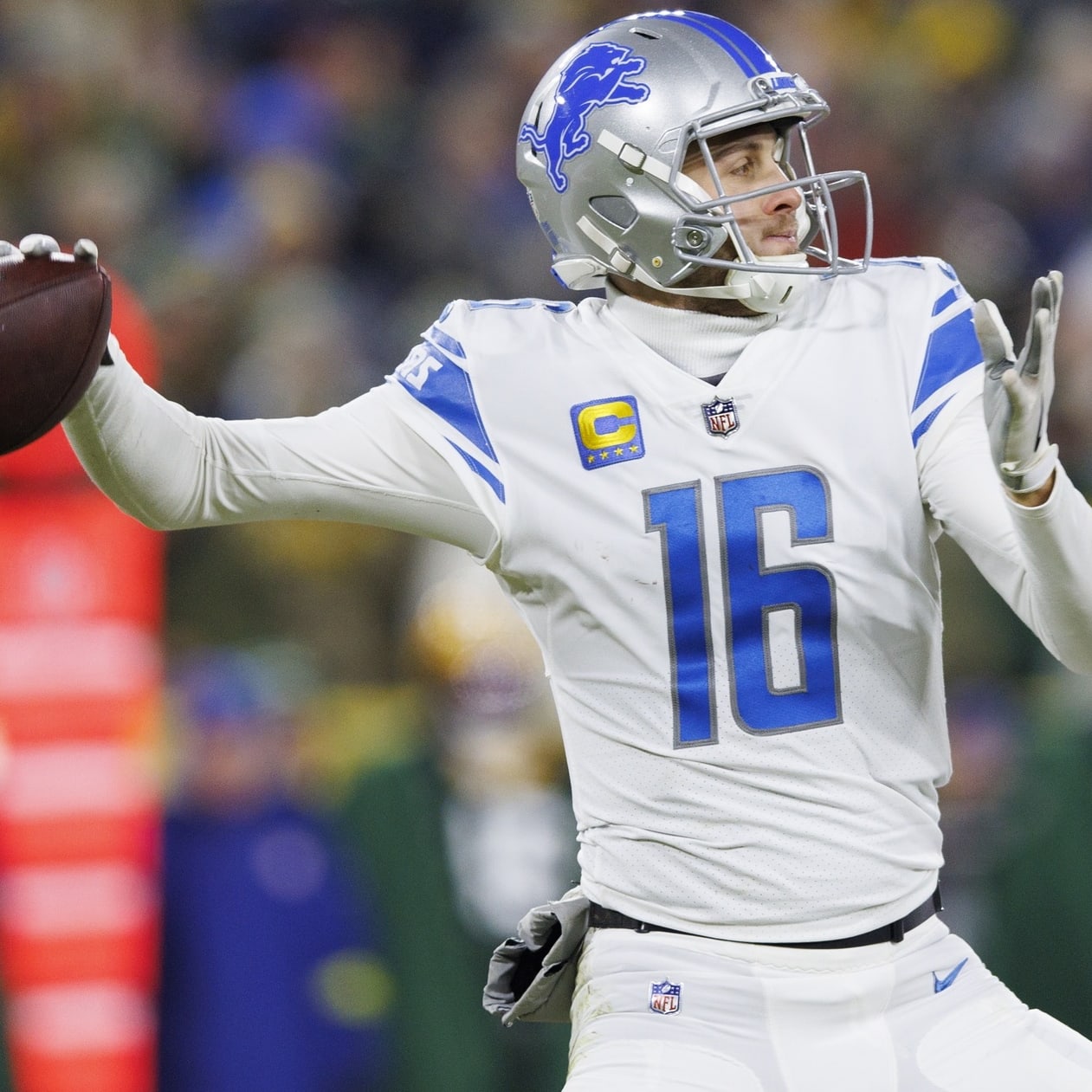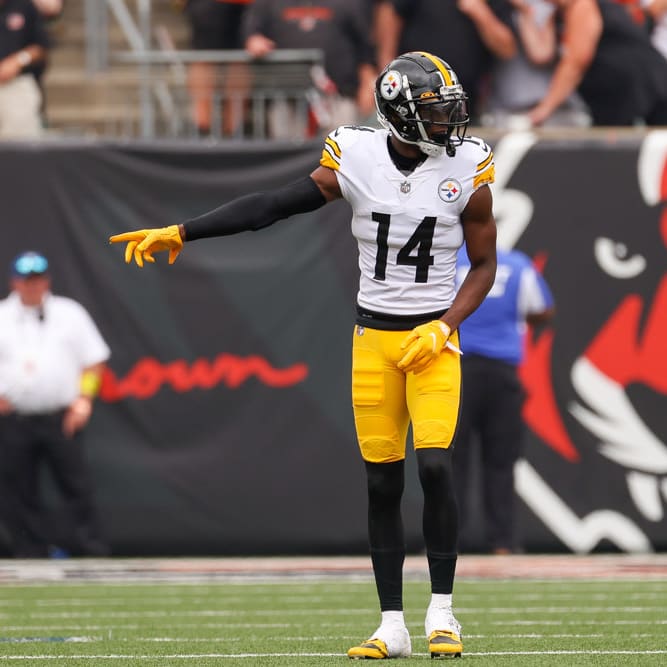This article is part of our Best Ball Strategy series.
Over the course of the next five days or so I'm going to write up my view of the ADP landscape in Underdog Best Ball drafts, naming the favorite and least favorite targets by position. First up is running back fades, which will probably be followed by running back buys before moving on to the other positions.
D'Andre Swift, RB, DET (16.3 ADP)
John and me were both leading Swift advocates last year when his ADP was in the third-round range, but even at the time we wouldn't have argued for Swift quite this high, and that was before an injury-riddled 2021 season, promising as it might have been otherwise. Swift's talent is beyond question and defenses rightfully fear him, so whatever else might happen we can expect Swift to post standout fantasy production on a per-snap basis. The issue is the question of what kind of snap count he can endure given his now-extensive history of breaking under physical stress, especially when he's going ahead of a player like Aaron Jones (18.1 ADP), who's basically the same category of player as Swift but in a much better offense. Even if Swift plays the entire season without injury he's unlikely to match Jones' production.
Swift, Jones and Austin Ekeler are all more or less the same category of player – their frames dictate limited rushing workloads, but their explosiveness from scrimmage and standout touchdown upside make them valuable anyway. Of this group Swift has the most extensive injury history and plays for the worst offense. There's not much reason to believe Swift bridges that gap on the basis of talent, either, good as he is.
Alvin Kamara, RB, NO (21.8 ADP)
This is a cheap blurb given that there's no real analysis to it – Kamara is likely to get suspended and his current ADP acts like it's unsure of that question as opposed to truly baking in the fact. You can't beat the hell out of some guy on camera and then admit it was assault by saying the guy was running away from you at the time, which is what Kamara freely told police. No matter how pessimistic you are for Saquon Barkley (23.4 ADP) or James Conner (33.1 ADP) with their injury histories, they warrant higher games played projections than Kamara this year.
Tony Pollard, RB, DAL (88.3 ADP)
Pollard is the worst kind of running back investment to me – he's just barely, occasionally flex-viable in his default state, and he has a limited upside scenario as a handcuff to Ezekiel Elliott (39.4 ADP). If Elliott misses time then Dallas will have to reconfigure its offense – Pollard won't simply take up Elliott's workload, because his frame doesn't afford him the same volume as a rusher before running the risk of fatigue or injury. That explosiveness Pollard shows off the bench occurs specifically because he plays off the bench and if his carry count both increased and increased its frequency between the tackles then he would basically be playing a position he never has, even going back to Memphis where he was a wide receiver tweener.
Of course, Pollard would be very valuable if Elliott to miss time, even if he takes up fewer carries than Elliott in that lead role. The problem for me is that the probability of this outcome and the upside it entails doesn't match or exceed the same variables for cheaper flex-handcuff types like Kareem Hunt (98.6 ADP), Melvin Gordon (108.0 ADP) or Alexander Mattison (123.8 ADP), all of whom would take up actual three-down workhorse roles in the event of injuries to their teammate starters. That's to say nothing of Cordarrelle Patterson (94.7 ADP), Damien Harris (95.6 ADP), Chase Edmonds (111.8 ADP) or Rashaad Penny (115.4 ADP), who are all conventional favorites to start for their teams.
Kenneth Walker, RB, SEA (88.9 ADP)
Walker is a convincing runner – his production at Michigan State was memorable – and his unofficial 40 time of 4.46 seconds at 211 pounds is totally sufficient for his style of play to translate well to the NFL. The problem is that this particular ADP puts a lot of pressure on Walker to immediately push aside Rashaad Penny (115.4 ADP) on the basis of merit. Maybe the early eighth round is too early for Penny given his injury history, but he clearly is the more talented player between himself and Walker and the current ADP supposes Walker winning the starting running back role in Seattle rather than inheriting it upon a Penny injury. If Penny plays 10 games this cost cannot be rationalized.
Anything Walker might be good at Penny does better. They're the same category of college prospects – speedy, high-volume, high-efficiency runners who make their living springing the big play. The difference between them is Penny was a more memorably productive runner yet in college and boasts the same speed on a frame at least nine pounds heavier. A person can't even begin to make a case for Walker from a talent standpoint without making the same case for Penny, with greater emphasis. Walker's ability to profit for his investors comes down entirely to Penny getting injured. Maybe he does, but if he doesn't Walker is a landmine at ADP, and none of the running backs in his ADP range need another player on their team to get hurt to provide mid-range returns. Even if you've sworn off Penny, Cordarrelle Patterson (94.7 ADP), Damien Harris (95.6 ADP) and Kareem Hunt (98.6 ADP) are better options than Walker at this price.
James Cook, RB, BUF (107.4 ADP)
The Bills don't run much and they don't throw much to their running backs. They are also a strong team with few needs, making them one of the first teams who can rationalize a luxury selection, paying a high price (second-round pick) without needing an immediate or even indefinite return normally demanded of said price. Some teams need to extract big production from their second-round running back investments, but the Bills are not one such team.
That this is the case is not encouraging for a player who already gave emphatic indications of a limited skill set on a frame that can only handle a limited snap count. At 199 pounds Cook is too skinny to hold up against repeated hits between the tackles, and Georgia's coaches all but telegraphed the same belief by giving him no more than 7.53 carries per game in any of his four collegiate seasons. So for Cook to pay off at this ADP he needs to smash as a pass catcher, because he's almost certainly no better than the third-leading runner on the team behind Josh Allen and Devin Singletary (106.3 ADP). Particularly with Underdog's 0.5PPR scoring, Singletary is clearly the preferable option on a team that threw just 91 targets to its running backs in 17 games last year. Even if we cut Singletary's 50 targets to 25 and Zack Moss' 32 targets to 10, you're still only left with about 45 targets for Cook, which isn't going to cut it in the ninth round given that he's likely capped at something like 85 carries, most of which will occur away from the red zone.
Tyler Allgeier, RB, ATL (151.5 ADP)
Allgeier is an interesting prospect, and I'm even probably higher on him as a prospect than most. The bigger a running back is (up to Brandon Jacobs, anyway) and the more explosive their rushing production the more they are likely to jump out to me, and Allgeier certainly checks those boxes at 224 pounds and with incredibly explosive production at BYU. It's rare for a big back to break so many long runs, but Allgeier was a big-play machine with an obscene 2,731 yards and 36 touchdowns on 426 carries his final two years at BYU, good for 6.4 yards per carry. Touchdown production is a downward pressure on yards per carry, so for Allgeier to average that many yards while scoring a touchdown every 12 carries makes clear that he was completely butchering these defenses. Even though all of this is true, it still only means so much, and nearly every other consideration casts concern over Allgeier at this price.
There are at least three issues facing Allgeier, and combined they make him a bad pick anywhere near this current price. The first is that, great as his college production was, there's reason to worry Allgeier lacks the physical tools to dominate in the NFL the same way he did in college. Allgeier's 4.6-second official 40 time at the combine is likely generous – all 2022 RB combine 40 times were generously rounded down from their reported unofficial times, which is the opposite of all combine precedent, so there's reason to believe Allgeier's less impressive 4.64-second unofficial time is the actual time he ran. There's nothing wrong with a 4.64 at 224 pounds, but it's not good enough for Allgeier to break long runs in the NFL the same way he did at BYU. Most of those long touchdowns in college are plays where he gets caught at the 20 (or sooner) in the NFL. He needs to find a way to be effective without long plays propelling his production. If you want to see how this exchange rate works from college to the NFL then look at Samaje Perine, who has nearly identical workout numbers to Allgeier and was also an incredibly explosive and productive runner in college. Perine is fine and might even have a good starting season in him, but he's also been kicked around the waiver wire and took years just to get a solid backup role in Cincinnati.
Damien Williams (214.9 ADP) should be considered the favorite to be the first Atlanta back behind lead man Cordarrelle Patterson (94.7 ADP). Williams has plenty that could go wrong and the Falcons can cut him with minimal financial pain, but the same is true of Allgeier as a fifth-round pick. Allgeier's main strength as a prospect – his frame and the bruising ability that comes with it – is more or less matched by Williams (222 pounds), yet Williams is much faster with a 4.45 combine 40. Not just that, but Allgeier has an at-best dubious pass-catching background whereas Williams is an easy standout in that area.












